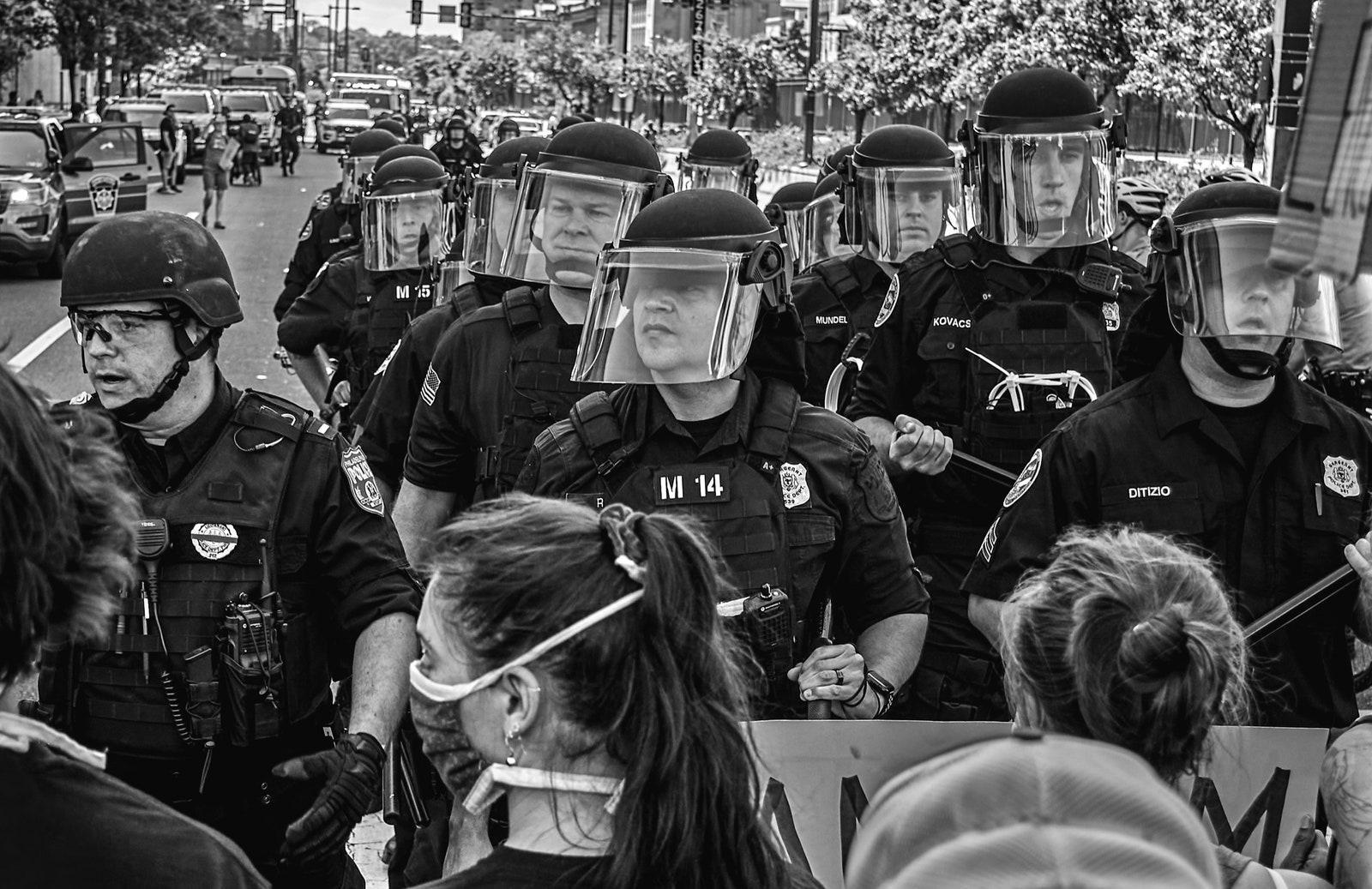A Photographer on the Front Lines of Philadelphia’s Protests
Twenty-nine-year-old Isaac Scott captured the early days of intense confrontation—including clashes with the police—and stayed for the more peaceful days that followed.
Photography by Isaac Scott
Isaac Scott is twenty-nine. Raised in Madison, Wisconsin, he moved to Philadelphia a couple of years ago to study ceramics at the Tyler School of Art and Architecture, at Temple University, where he worked long hours at a potter’s wheel. So, when the pandemic shut down the school and his studio, he was left without an artistic outlet. He started taking a camera with him everywhere, walking all over the city, “trying to put down some images and ideas—for later,” he said. But after the murder of George Floyd, in Minneapolis, and the spread of demonstrations across the country, he took to marching among the marchers, particularly along the stretch from City Hall to the Philadelphia Museum of Art. He and his camera stayed with the protests, from the early days of intense confrontation, of vandalism and police cars in flames, to the far more peaceful days that followed.
“I was teargassed twice,” Scott said, as he took a morning break. “People were getting maced by the cops at point-blank range.” He is hardly an experienced conflict journalist, and yet he would regularly get as close as he could to the front lines—and that meant being close to agitated police in riot gear. “I’m a six-foot-three black dude and I knew they’d have no issues beating me, and people like me, over the head,” he said, describing one particular moment of confrontation and fear. “I could only see things like that if I was really up close and with people. That was the kind of thing I was there to capture.”
In many cities, the effect of the demonstrations has shifted from the realm of the symbolic to the realm of policy. In Philadelphia, the removal of a bronze statue of the notoriously racist Frank Rizzo, who was the city’s mayor for most of the seventies, was followed by a raft of bills introduced in the city council to reform the police department. “The energy is there, and the city is finally respecting what’s happening,” Scott said. “Now I gotta get out there again. There’s more to come.”









